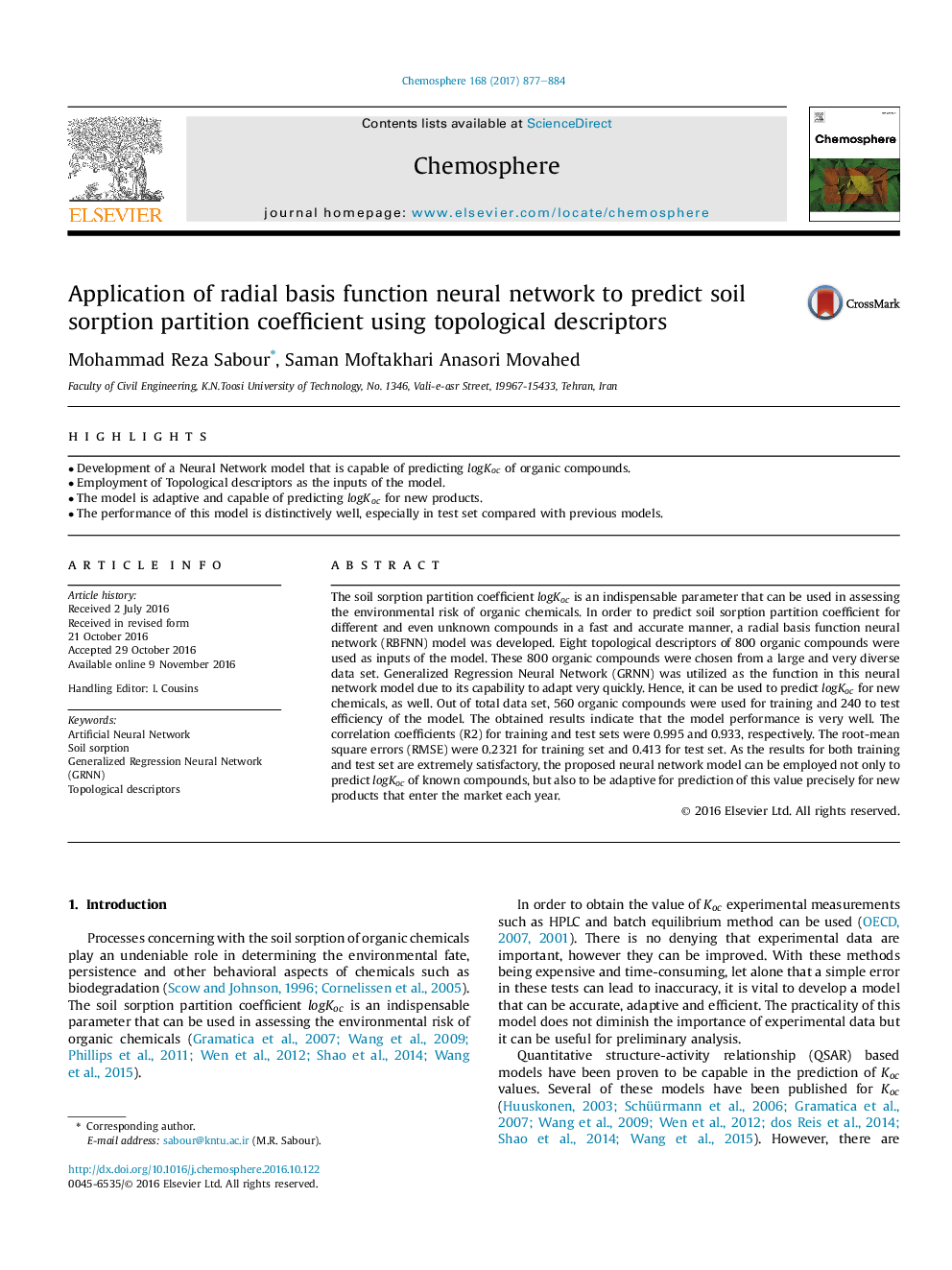| کد مقاله | کد نشریه | سال انتشار | مقاله انگلیسی | نسخه تمام متن |
|---|---|---|---|---|
| 5746625 | 1618803 | 2017 | 8 صفحه PDF | دانلود رایگان |
- Development of a Neural Network model that is capable of predicting logKoc of organic compounds.
- Employment of Topological descriptors as the inputs of the model.
- The model is adaptive and capable of predicting logKoc for new products.
- The performance of this model is distinctively well, especially in test set compared with previous models.
The soil sorption partition coefficient logKoc is an indispensable parameter that can be used in assessing the environmental risk of organic chemicals. In order to predict soil sorption partition coefficient for different and even unknown compounds in a fast and accurate manner, a radial basis function neural network (RBFNN) model was developed. Eight topological descriptors of 800 organic compounds were used as inputs of the model. These 800 organic compounds were chosen from a large and very diverse data set. Generalized Regression Neural Network (GRNN) was utilized as the function in this neural network model due to its capability to adapt very quickly. Hence, it can be used to predict logKoc for new chemicals, as well. Out of total data set, 560 organic compounds were used for training and 240 to test efficiency of the model. The obtained results indicate that the model performance is very well. The correlation coefficients (R2) for training and test sets were 0.995 and 0.933, respectively. The root-mean square errors (RMSE) were 0.2321 for training set and 0.413 for test set. As the results for both training and test set are extremely satisfactory, the proposed neural network model can be employed not only to predict logKoc of known compounds, but also to be adaptive for prediction of this value precisely for new products that enter the market each year.
Journal: Chemosphere - Volume 168, February 2017, Pages 877-884
